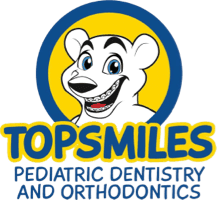Adult orthodontic treatment is more common than you might think—and it’s not just about looks. Whether your bite feels off, your teeth have started shifting, or you’ve always wanted a straighter smile, orthodontic treatment as an adult can be a game-changer..
At Topsmiles Pediatric Dentistry and Orthodontics, you’ll find options that fit your schedule, comfort level, and goals. Dr. Alvaro Salles works with you to choose between clear aligners like Invisalign or braces that are far less bulky and noticeable than you might remember. Conveniently located near St. Anne’s Road and Portage Avenue, the office is easy to reach whether you’re coming from work, home, or errands. You’ll get care that fits your life—not the other way around.
Why More Adults Are Choosing to Straighten Their Teeth
It’s not just kids and teens filling the orthodontic chairs anymore. Adults come in for different reasons. Some want to fix what’s shifted over time. Others never had treatment growing up and finally want to take care of it. Some need space made for a crown or implant. And sometimes, it’s just about wanting to feel better in your smile. Adult orthodontics can help with:
- Crowding that makes brushing and flossing harder
- Bite issues causing tension or jaw pain
- Spacing or gaps that impact appearance or function
- Teeth that have drifted after skipping a retainer for years
Whatever brought you here, the right treatment can improve both how your teeth look and how they work. Yes, it’s still worth it, even if you’re in your 30s, 40s, or beyond.
Two Solid Options That Work for Adult Smiles
Not every treatment is ideal for every case. That’s where a skilled orthodontist like Dr. Salles comes in. He’ll look at what’s going on below the surface and help you decide between two proven options that tend to work best for adults.
Invisalign
Clear aligners are often the first thing people ask about, and for good reason. Invisalign is nearly invisible, easy to manage, and fits into busy routines. What makes it appealing:
- You can remove them to eat, brush, and floss
- No brackets or wires
- Subtle appearance, even up close
- Fewer office visits than traditional braces
You’ll need to wear them consistently, usually 20 to 22 hours a day, and stay on track with switching aligners. If you like having flexibility but know you’ll stick with the plan, this option can be a great fit.
Self-Ligating Braces
If you need more significant correction or prefer something you don’t have to take in and out, self-ligating braces might be a better choice.
They’re different from traditional braces. Instead of using rubber bands, the brackets have built-in clips that hold the wire in place. That means less friction, fewer adjustments, and more comfort for many patients. Why do adults consider them:
- They can handle more complex cases
- Available in metal or clear brackets
- Appointments are usually quicker
- Less pressure on teeth over time
Some adults prefer the simplicity of having something fixed in place. If that sounds like you, this could be the way to go.
How Adult Treatment Affects More Than Your Teeth
It’s easy to think of orthodontics as a cosmetic thing, but the benefits go beyond appearance. When your bite is lined up properly, it’s easier to chew, speak, and clean your teeth. That can mean fewer dental problems long-term, and less risk of things like gum disease, enamel wear, or jaw strain.
Well-aligned teeth are also easier to brush and floss, which helps cut down on plaque and inflammation. If you’ve had gum issues in the past, fixing the alignment might help keep things from flaring up again.
This is especially important if you’re managing other dental work, like crowns or bridges. Orthodontic treatment can create space and improve the foundation for everything else in your mouth to function better.

Treatment Timing, Cost, and What to Expect
Every case is different, but most adult orthodontic treatment falls somewhere between 12 and 24 months. Invisalign can sometimes be quicker if your case is mild. Braces usually take a little longer if you need more movement. You’ll have regular check-ins either way. These appointments keep things on track and give Dr. Salles a chance to make any adjustments.
As for cost, treatment with Invisalign or braces will vary. That depends on how complex your case is and how long it will take. Topsmiles Pediatric Dentistry And Orthodontics offers payment plans and can walk you through what your insurance might cover.
FAQs from Adults Thinking About Braces
Is it worth it to get braces at my age?
Yes. If your teeth or bite are bothering you now, they probably won’t get better on their own. Addressing the issue now can prevent bigger problems later.
Will people notice?
Both Invisalign and self-ligating braces are designed to be more discreet. Clear aligners are almost invisible, and clear brackets on braces blend in with your teeth.
How often will I have to go in?
Invisalign patients usually come in every six to eight weeks. With braces, appointments may be slightly more frequent depending on what’s needed.
Can I eat normally?
With Invisalign, yes, just take the aligners out. With braces, you’ll want to skip things that are hard, sticky, or chewy to avoid damaging the brackets.
Does it hurt?
There’s some soreness when teeth start shifting or after adjustments. It’s usually manageable and fades quickly.

Let’s Find What Works for You
If you’ve been thinking about straightening your teeth, now’s a good time to take that first step. Dr. Alvaro Salles is here to help. You’ll get thoughtful care and practical options at Topsmiles Pediatric Dentistry and Orthodontics without the runaround.
Reach out to schedule a consultation at our St. Anne’s Road office or our Portage Avenue office You’ll have a better idea of what’s possible and what’s right for your smile moving forward.
 Get Started
Get Started